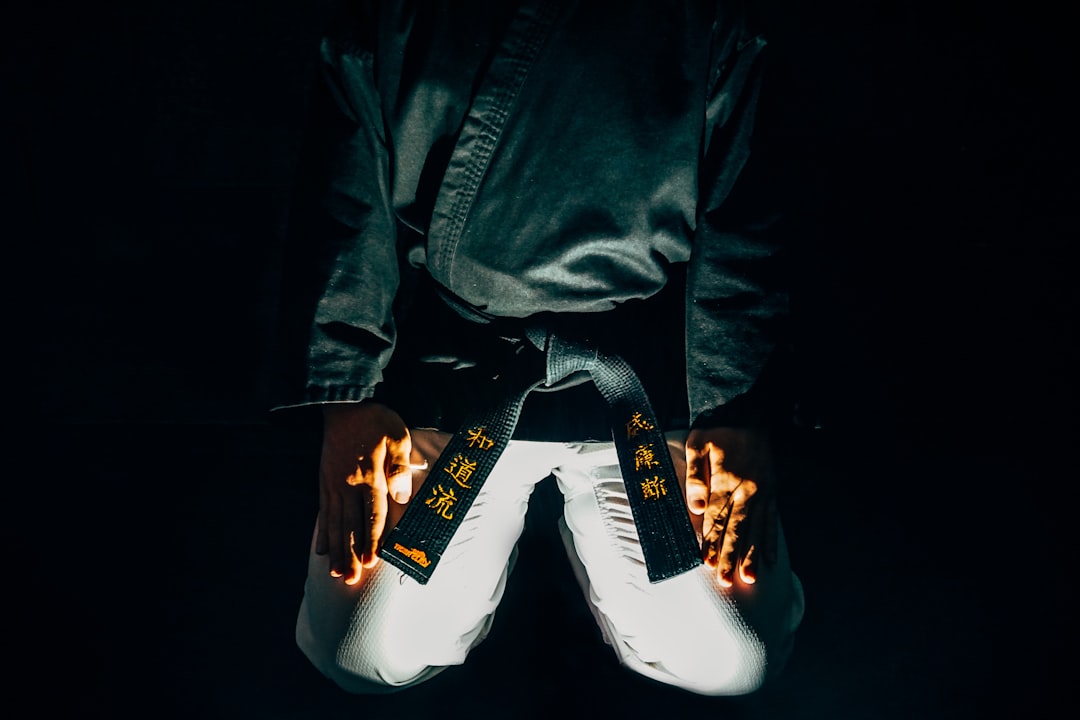When gearing up your child for karate sparring, it's crucial to choose a well-fitted karate suit that balances comfort with safety. The suit should be snug yet not restrictive, with measurements tailored to the child's current belt level and sparring experience. It should allow for full range of motion without the risk of injury, with the jacket reaching from neck to hip, ensuring it doesn't impede movement or catch on objects or opponents. The pants must sit comfortably above the hips, stay up without restricting agility, and be hemmed just above the ankles. In addition to the gi, proper fitting protective gear, including helmets, gum shields, and body protectors, is essential for optimal safety during sparring. Each piece of protective equipment should offer maximum protection while maintaining unrestricted movement, ensuring your child can perform at their best in karate sparring. Properly selected karate attire and gear not only enhance performance but also significantly contribute to the safety and effectiveness of your child's training and competition.
When gearing up young martial artists for sparring, selecting the right equipment is paramount. This article serves as a comprehensive guide, focusing on how to accurately measure children for their karate suits designed specifically for sparring. We’ll navigate through essential steps to ensure a snug yet functional fit, critical for their safety and performance. Whether you’re a parent or a coach, understanding the nuances of measuring for a kids’ karate suit can make all the difference in their training and competitions. Join us as we delve into the details necessary for sizing up success in children’s karate sparring equipment.
- Sizing Up Success: A Guide to Measuring Kids' Karate Suits for Sparring
- Ensuring Fit and Function: Key Steps for Proper Children's Karate Gear Measurement
Sizing Up Success: A Guide to Measuring Kids' Karate Suits for Sparring

When outfitting your young martial artist for a sparring session, it’s crucial to ensure their karate suit fits perfectly to maximize comfort and safety. A well-fitted karate suit not only allows for full range of motion but also protects against injury. To measure for the ideal karate suit, start by considering the child’s current belt level and their level of sparring experience. Does the child have enough flexibility to perform kicks and blocks with ease? The suit should be snug yet allow for growth in skill and size. The jacket of the suit should reach from the base of the neck, down to the top of the hips, without restricting movement. How does the jacket length compare to these points? Adjust as necessary to avoid excess material that could catch on objects or opponents during a match.
Next, focus on the pants component. The waistband should sit comfortably above the hipbones, offering stability without being too tight. Are the pants’ hemlines at an appropriate length, reaching just above the ankle without dragging on the ground? Properly fitted pants will stay up during active movements and won’t hinder the athlete’s performance. Additionally, ensure there is enough room in the torso and thigh areas for the child to move freely. A suit that’s too tight can restrict motion, while one that’s too loose may catch on limbs or the ground, leading to potential falls or injuries. With these considerations in mind, your child will be well-equipped for their next sparring session in a karate suit that fits both the requirements of the sport and their individual needs.
Ensuring Fit and Function: Key Steps for Proper Children's Karate Gear Measurement

When outfitting your child for karate sparring, ensuring the fit and function of their gear is paramount. The right equipment not only enhances their safety but also their performance. To begin with, the karate suit, or gi, should be snug yet allow for a full range of motion. Measure your child’s chest and length from the base of the neck to the hem of the pants to determine the correct size. Is the chest measurement within 2 to 3 inches of their own, accounting for ease of movement? Does the suit extend to just above the ankles without dragging on the ground? If both conditions are met, the gi should fit appropriately. The jacket should button comfortably and not be overly restrictive. Additionally, the protective gear, such as the helmet, gum shield, and body protector, must be sized to fit securely without being too tight or too loose. Do these accessories offer adequate protection while still providing enough room for your child to move freely? Ensuring that the protective equipment is well-fitted will help prevent injuries during practice and competition. Remember, the headgear should not impede vision or hearing, the body protector should cover vital areas without hindering striking capabilities, and the gum shield must fit comfortably within the mouth without obstructing the teeth or tongue. By following these steps, you can guarantee that your child’s karate sparring gear is both safe and effective for their specific needs.
When outfitting your child for karate sparring, precise measurements are key to ensuring their safety and comfort. By following the detailed guidelines provided in “Sizing Up Success: A Guide to Measuring Kids’ Karate Suits for Sparring” and adhering to the essential steps outlined in “Ensuring Fit and Function: Key Steps for Proper Children’s Karate Gear Measurement,” you can confidently select gear that offers both protection and mobility. Remember, a well-fitted karate suit is not just about the fit; it’s about empowering young martial artists to engage in their sport with the utmost safety. With these measurements in hand, your child is ready to step onto the mat with assurance, knowing they are equipped for the rigors of sparring.
